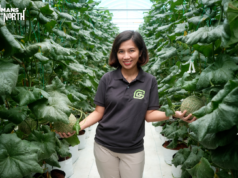MARILAO, Bulacan – Candidates running for national and local elective positions are headed to a more expensive campaign as far as printing of sample ballots is concerned.
This concern was highlighted by Susan “Toots” Ople, a senatorial candidate of the Nacionalista Party (NP) during a voters’ education forum sponsored by Mabuhay, a local weekly publication that celebrated its 30th founding anniversary at the SM City Supermall here on Wednesday.
“We will have a sample ballot that is at least two feet long because the number of candidates especially for party-list is still growing,” Ople said referring
to about 150 accredited party-lists by the Commission on Elections which will consume too much space on the sample ballot.
Aside from accredited party-lists, all names of candidates from the presidential post down to municipal and city councilors will also be printed on the sample ballots.
What makes matters worse for candidates for national positions like those running for President, Vice President and for the Senate, is the fact that they have to make thousands of sets of sample ballot as there will be different candidates in every city and municipality.
“This will be a big expense for candidates and political parties,” said Ople, the president of the Blas F. Ople Policy Center, a non-governmental organization that assists overseas Filipino workers.
She said that in the previous elections, candidates for national and local positions used to prepare sample ballots at limited expense.
“Dati kahit cliché lang ay puwede nang gamitin bilang kodigo ng botante, pero ngayon, ibang klase ang 2010 elections,” said Ople referring to small piece of paper usually handed out to voters on election day where the name of candidate or party-list group is printed.
Printing and handing sample ballots is crucial in previous elections, but more especially in the coming automated polls as names of candidates will not be written down by voters, instead, they will only shade an oblong in front of the candidates’ names on the ballot.
As this developed, Anthony Pavia, the managing editor of Mabuhay who has over 30 years of experience in printing press said that printing a sample ballot measuring over two feet long might cost a candidate at least P2 per ballot.
The sample ballot will be printed back-to-back.
“Malaking gastos yan considering that there is a specific amount for candidates and political parties to spend for every voter,” Pavia said.
Aside from election expenditures, Ople also reminded the electorate to take an active role in the historic 2010 automated elections.
“This election is a referendum for us, Filipinos. We have to be serious about our current political affairs and civic obligations if we have to gain the respect of the world as a modern democracy,” Ople said.
This concern was highlighted by Susan “Toots” Ople, a senatorial candidate of the Nacionalista Party (NP) during a voters’ education forum sponsored by Mabuhay, a local weekly publication that celebrated its 30th founding anniversary at the SM City Supermall here on Wednesday.
“We will have a sample ballot that is at least two feet long because the number of candidates especially for party-list is still growing,” Ople said referring
to about 150 accredited party-lists by the Commission on Elections which will consume too much space on the sample ballot.
Aside from accredited party-lists, all names of candidates from the presidential post down to municipal and city councilors will also be printed on the sample ballots.
What makes matters worse for candidates for national positions like those running for President, Vice President and for the Senate, is the fact that they have to make thousands of sets of sample ballot as there will be different candidates in every city and municipality.
“This will be a big expense for candidates and political parties,” said Ople, the president of the Blas F. Ople Policy Center, a non-governmental organization that assists overseas Filipino workers.
She said that in the previous elections, candidates for national and local positions used to prepare sample ballots at limited expense.
“Dati kahit cliché lang ay puwede nang gamitin bilang kodigo ng botante, pero ngayon, ibang klase ang 2010 elections,” said Ople referring to small piece of paper usually handed out to voters on election day where the name of candidate or party-list group is printed.
Printing and handing sample ballots is crucial in previous elections, but more especially in the coming automated polls as names of candidates will not be written down by voters, instead, they will only shade an oblong in front of the candidates’ names on the ballot.
As this developed, Anthony Pavia, the managing editor of Mabuhay who has over 30 years of experience in printing press said that printing a sample ballot measuring over two feet long might cost a candidate at least P2 per ballot.
The sample ballot will be printed back-to-back.
“Malaking gastos yan considering that there is a specific amount for candidates and political parties to spend for every voter,” Pavia said.
Aside from election expenditures, Ople also reminded the electorate to take an active role in the historic 2010 automated elections.
“This election is a referendum for us, Filipinos. We have to be serious about our current political affairs and civic obligations if we have to gain the respect of the world as a modern democracy,” Ople said.




